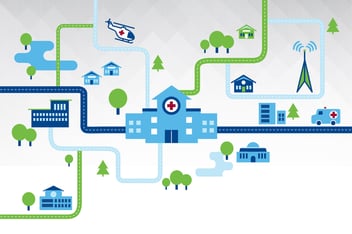Only 27% of patients say they have access to some kind of mapping, geolocation, or wayfinding solution from their health system according to a survey released by Gozio in early 2024. However, 42% said offering a mobile solution for wayfinding was very or extremely important. This shouldn’t be a surprise given how complex some health system campuses can be. In fact, according to one study, wayfinding in large complex hospitals has been getting increasingly difficult.
The growing complexity of navigating the healthcare experience both in the digital and real worlds, is one of the reasons 30% of patients changed healthcare providers last year. Whether it is because of increasing mergers and acquisitions or building new hospitals in a system, organizations are getting more complicated. Currently, 2024 is on pace to be the biggest year for health systems M&A on record, overtaking the last biggest year which was 2023!
In addition to retaining patients and addressing the added complexity created by the growth happening in healthcare, there are several other good reasons to think about digital wayfinding for a health system.
- This complexity causes stress for patients. One study found that wayfinding in many complex environments can easily lead to emotional problems such as frustration and anxiety.
- When patients get lost in healthcare facilities, they miss or are late for their appointments. Thirty percent of first time visitors report getting lost in hospitals. Several different studies have shown that improved wayfinding can reduce those missed appointments and late arrivals.
- Staff can’t always help and get lost themselves. About a quarter of all hospital staff report that they can’t always find their way around, which means they can’t direct patients either.
- Even when staff can direct patients, they may not have the time. Hospital staff today are overburdened and burned out. They can’t get through the tasks they need to complete for patient care much less walk someone to a location in the health system. And if they do walk them to their appointment, it will cost them about seven minutes each time, adding up to hundreds of thousands of dollars a year for directing to patients.
- While patients are delayed, other staff are waiting idle. Forty percent of hospitals reported idle staff while waiting for late patients.
Finally, good digital hospital wayfinding that gets patients from home to parking to their point of care has repeatedly been shown to improve the patient experience. Seventy-seven percent of visitors to hospitals say that digital wayfinding improves their experience. That matters when so many patients are at risk of leaving for a better experience.
In the end, there are really a lot more than five reasons to invest in digital wayfinding for a complex health system. To learn more about how to choose the right wayfinding solution, download this complete guide to wayfinding in healthcare.


